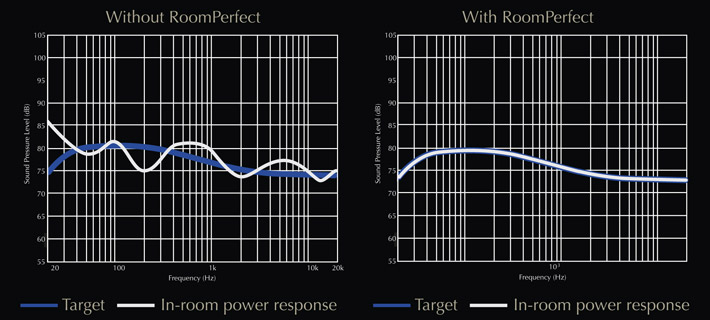

Good loudspeakers, high-quality electronics, precise placement - all of this makes a really good hi-fi system. However, it is often forgotten that the room in which the system is located has a decisive influence on the actual sound. And in the vast majority of cases, the room is actually the weakest link in the hi-fi chain. Most high-end hi-fi products have been developed in and for acoustically optimal rooms. In real life, however, most of these systems will not be found in acoustics labs but in real living spaces. To clarify the situation: The sound of hi-fi electronics and loudspeakers is usually precisely tuned to tolerances of 2 or 3 dB. However, the influence of room acoustics in a normal listening room can easily be 20dB or more at certain frequencies. That ruins the sound of even the best system.
Your system should sound best in your home - that's why Lyngdorf Audio developed RoomPerfect room correction technology based on more than 20 years of research and development in this area. The latest version of RoomPerfect can now also be found in the TDAI-2170 amplifier. RoomPerfect differs from other room correction systems in that it includes the sound properties of your loudspeakers in the analysis as well as the results of a measurement of the room acoustics. This complex measurement with different measuring points distributed in the room takes about 20 minutes and analyzes these factors very precisely and then calculates the corresponding corrections for the signal. The result is a sound that is perfectly adapted to the size, shape and acoustic properties of your room.
RoomPerfect also allows more flexibility in the placement of the speakers. And the sound can also benefit from it. For example, if you place a loudspeaker directly on the wall, the bass reproduction of the loudspeaker is improved, but other frequency ranges usually suffer in this case. RoomPerfect eliminates the negative influences of this setup and ensures an optimal sound. How easy the RoomPerfect calibration works with the Lyngdorf TDAI-2170 is shown in this video: 